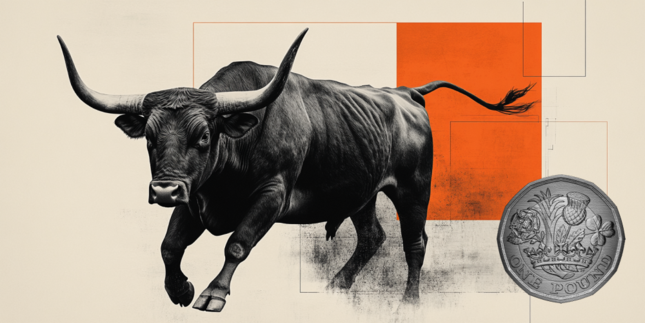- WTI depreciates as Israel is willing to refrain from targeting Iranian oil facilities.
- Israeli Prime Minister Benjamin Netanyahu informed the US that Israel plans to attack Iranian military targets rather than nuclear or Oil infrastructure.
- OPEC Monthly Market Report revised down its global Oil demand growth outlook for 2024 and 2025.
West Texas Intermediate (WTI) Oil price continues its decline for the third successive session, trading around $71.10 per barrel during Tuesday’s Asian hours. Crude Oil prices are facing downward pressure following a media report suggesting that Israel is willing to refrain from targeting Iranian oil facilities, easing concerns about potential supply disruptions.
The Washington Post reported on Monday that Israeli Prime Minister Benjamin Netanyahu informed the United States (US) that Israel plans to focus on Iranian military targets rather than nuclear or Oil infrastructure. Last week, Oil prices had gained support as investors feared supply risks after Israel indicated plans to retaliate against a missile attack from Iran.
On Monday, Crude Oil prices dropped nearly 5% following the release of the OPEC Monthly Market Report, which revised its global Oil demand growth outlook for 2024 and 2025. OPEC also cut its forecast for China's crude oil demand growth for the third consecutive month in October, citing the growing adoption of electric vehicles and sluggish economic growth as key factors.
The Monthly Oil Market Report (MOMR) by the Organization of the Petroleum Exporting Countries (OPEC) suggests China's crude Oil demand will expand by 580,000 barrels per day (bpd) in 2024. This estimate is down from the 650,000 bpd gain forecast in September and is also 180,000 bpd below the rise of 760,000 bpd OPEC was predicting in July for the world's biggest oil importer.
Oil market sentiment has turned pessimistic due to China's increasing deflationary pressures, which have raised concerns about slowing economic growth. Despite recent stimulus plans, uncertainty surrounding the size of the package has failed to alleviate fears of downside risks to China's economic outlook, further dampening traders' confidence.
Saudi Arabia could ramp up production amid declining cohesion among OPEC+ members. Despite voluntary production cuts, OPEC+ producers have been overproducing by as much as 800,000 barrels per day. The Saudi oil minister cautioned that prices could fall to $50 per barrel if member countries do not adhere to the agreed-upon cuts.
WTI Oil FAQs
WTI Oil is a type of Crude Oil sold on international markets. The WTI stands for West Texas Intermediate, one of three major types including Brent and Dubai Crude. WTI is also referred to as “light” and “sweet” because of its relatively low gravity and sulfur content respectively. It is considered a high quality Oil that is easily refined. It is sourced in the United States and distributed via the Cushing hub, which is considered “The Pipeline Crossroads of the World”. It is a benchmark for the Oil market and WTI price is frequently quoted in the media.
Like all assets, supply and demand are the key drivers of WTI Oil price. As such, global growth can be a driver of increased demand and vice versa for weak global growth. Political instability, wars, and sanctions can disrupt supply and impact prices. The decisions of OPEC, a group of major Oil-producing countries, is another key driver of price. The value of the US Dollar influences the price of WTI Crude Oil, since Oil is predominantly traded in US Dollars, thus a weaker US Dollar can make Oil more affordable and vice versa.
The weekly Oil inventory reports published by the American Petroleum Institute (API) and the Energy Information Agency (EIA) impact the price of WTI Oil. Changes in inventories reflect fluctuating supply and demand. If the data shows a drop in inventories it can indicate increased demand, pushing up Oil price. Higher inventories can reflect increased supply, pushing down prices. API’s report is published every Tuesday and EIA’s the day after. Their results are usually similar, falling within 1% of each other 75% of the time. The EIA data is considered more reliable, since it is a government agency.
OPEC (Organization of the Petroleum Exporting Countries) is a group of 12 Oil-producing nations who collectively decide production quotas for member countries at twice-yearly meetings. Their decisions often impact WTI Oil prices. When OPEC decides to lower quotas, it can tighten supply, pushing up Oil prices. When OPEC increases production, it has the opposite effect. OPEC+ refers to an expanded group that includes ten extra non-OPEC members, the most notable of which is Russia.
Information on these pages contains forward-looking statements that involve risks and uncertainties. Markets and instruments profiled on this page are for informational purposes only and should not in any way come across as a recommendation to buy or sell in these assets. You should do your own thorough research before making any investment decisions. FXStreet does not in any way guarantee that this information is free from mistakes, errors, or material misstatements. It also does not guarantee that this information is of a timely nature. Investing in Open Markets involves a great deal of risk, including the loss of all or a portion of your investment, as well as emotional distress. All risks, losses and costs associated with investing, including total loss of principal, are your responsibility. The views and opinions expressed in this article are those of the authors and do not necessarily reflect the official policy or position of FXStreet nor its advertisers. The author will not be held responsible for information that is found at the end of links posted on this page.
If not otherwise explicitly mentioned in the body of the article, at the time of writing, the author has no position in any stock mentioned in this article and no business relationship with any company mentioned. The author has not received compensation for writing this article, other than from FXStreet.
FXStreet and the author do not provide personalized recommendations. The author makes no representations as to the accuracy, completeness, or suitability of this information. FXStreet and the author will not be liable for any errors, omissions or any losses, injuries or damages arising from this information and its display or use. Errors and omissions excepted.
The author and FXStreet are not registered investment advisors and nothing in this article is intended to be investment advice.
Recommended content
Editors’ Picks

EUR/USD remains offered near the 1.0800 zone
On Monday, EUR/USD remains rangebound around 1.0800, as risk-averse sentiment keeps the US Dollar buoyant amid ongoing tariff concerns, while investors remain wary ahead of "liberation day".

Gold sits at record highs above $3,100 amid tariff woes
Gold price holds its record-setting rally toward $3,150 in the second half of the day on Monday. The bullion continues to capitalize on safe-haven flows amid intensifying global tariff war fears. US economic concerns weigh on US Treasury bond yields, allowing XAU/USD to push higher.

GBP/USD stays in range near 1.2950 as mood sours
GBP/USD fluctuates in a narrow channel at around 1.2950 at the beginning of the new week. Growing concerns over US President Donald Trump's tariffs igniting inflation and dampen economic growth weigh on risk mood and don't allow the pair to gain traction.

Seven Fundamentals for the Week: “Liberation Day” tariffs and Nonfarm Payrolls to rock markets Premium
United States President Donald Trump is set to announce tariffs in the middle of the week; but reports, rumors, and counter-measures will likely dominate the headline. It is also a busy week on the economic data front, with a full buildup to the Nonfarm Payrolls (NFP) data for March.

US: Trump's 'Liberation day' – What to expect?
Trump has so far enacted tariff changes that have lifted the trade-weighted average tariff rate on all US imports by around 5.5-6.0%-points. While re-rerouting of trade will decrease the effectiveness of tariffs over time, the current level is already close to the highest since the second world war.

The Best brokers to trade EUR/USD
SPONSORED Discover the top brokers for trading EUR/USD in 2025. Our list features brokers with competitive spreads, fast execution, and powerful platforms. Whether you're a beginner or an expert, find the right partner to navigate the dynamic Forex market.

